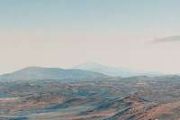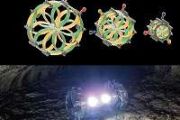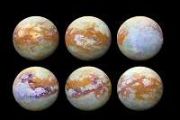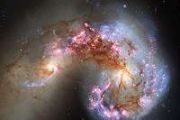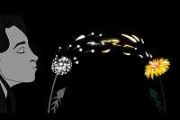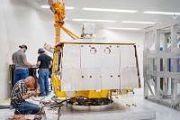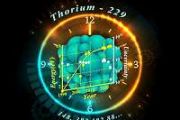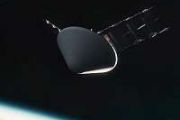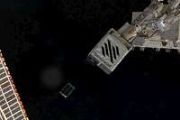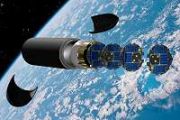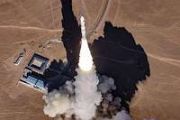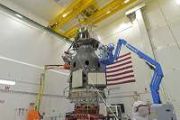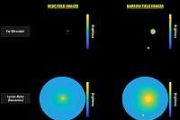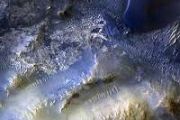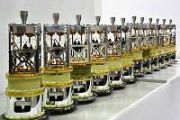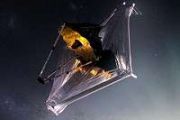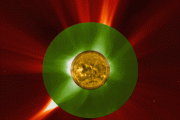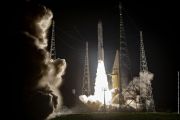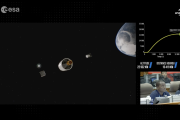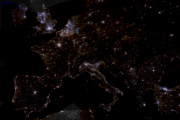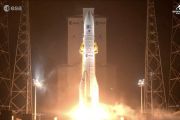
Copernical Team
Two meteor showers will flash across the sky around the same time in late July
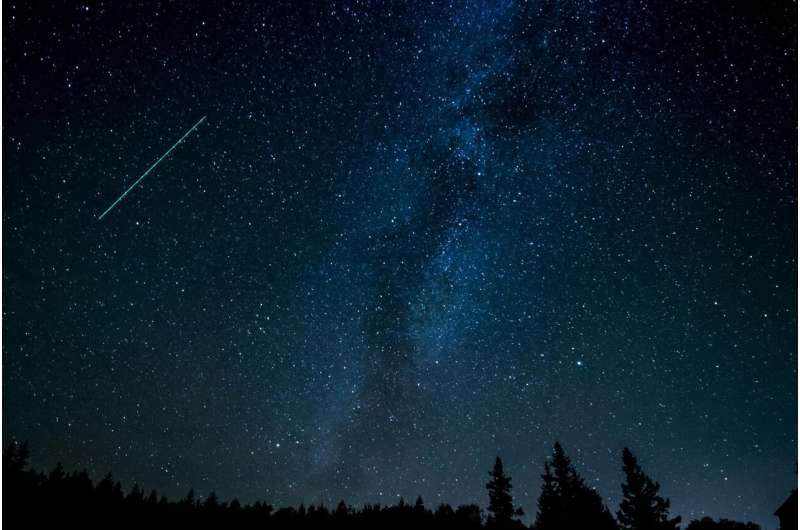
Get ready for a meteor shower doubleheader.
The Southern Delta Aquariid meteor shower peaks in late July. And this year, it will coincide with a second smaller meteor shower, the Alpha Capricornids.
The Delta Aquariids occur every year in North America's late summer. This year's peak activity happens early Tuesday morning, with an expected 15 to 20 meteors visible per hour in the Northern Hemisphere, under dark skies. Viewing should be even better in the Southern Hemisphere. The shower lasts through August 21, according to the American Meteor Society.
Around the same time, the Alpha Capricornid meteor shower should produce around five meteors per hour and lasts through August 15.
Here's what to know about the Delta Aquariids and other meteor showers.
What is a meteor shower?
Multiple meteor showers occur annually and you don't need special equipment to see them.
Most meteor showers originate from the debris of comets. The source of the Delta Aquariids is thought to be from the comet 96P/Machholz. The Alpha Capricornids originate from the comet 169P/NEAT.
When rocks from space enter Earth's atmosphere, the resistance from the air makes them very hot.
ESA blasts off at Gamescom

Calling all space dreamers and game developers! ESA is back at Gamescom, the world's biggest video game event, kicking off in Cologne from 21 to 25 August. Our stand is in the careers area of Koelnmesse in Hall 10.2, so buckle up for a galaxy of opportunities!
USPACE introduces 6 new commercial optical satellites
 USPACE Technology Group Limited ("USPACE" [1725.HK]) has announced the launch of six new commercial optical satellites and related aerospace products. The Group aims to tap into the global market and attract more customers, focusing on the growing demand from emerging markets and SMEs. This marks a significant step in USPACE's efforts toward satellite mass production and commercialization, furth
USPACE Technology Group Limited ("USPACE" [1725.HK]) has announced the launch of six new commercial optical satellites and related aerospace products. The Group aims to tap into the global market and attract more customers, focusing on the growing demand from emerging markets and SMEs. This marks a significant step in USPACE's efforts toward satellite mass production and commercialization, furth AST SpaceMobile Prepares to Ship First Five Commercial Satellites
 AST SpaceMobile, Inc. (NASDAQ: ASTS) has announced the completion of its first five commercial satellites, named Bluebirds. These satellites, each equipped with communications arrays spanning 693 square feet, are set to be shipped to Cape Canaveral in the first week of August. A 7-day launch window is scheduled for September.
"This is a momentous occasion for AST SpaceMobile. These first f
AST SpaceMobile, Inc. (NASDAQ: ASTS) has announced the completion of its first five commercial satellites, named Bluebirds. These satellites, each equipped with communications arrays spanning 693 square feet, are set to be shipped to Cape Canaveral in the first week of August. A 7-day launch window is scheduled for September.
"This is a momentous occasion for AST SpaceMobile. These first f China's Climate and Carbon Monitoring Satellites Now Operational
 China's new atmospheric environment monitoring satellite and terrestrial ecosystem carbon monitoring satellite are now officially operational, according to the China National Space Administration (CNSA).
"During their in-orbit testing, these satellites demonstrated favorable application results across multiple areas, including ecological environment, forestry and grassland, geographic surv
China's new atmospheric environment monitoring satellite and terrestrial ecosystem carbon monitoring satellite are now officially operational, according to the China National Space Administration (CNSA).
"During their in-orbit testing, these satellites demonstrated favorable application results across multiple areas, including ecological environment, forestry and grassland, geographic surv Kepler's 1607 Sunspot Sketches Shed Light on Early Solar Cycles
 Researchers have utilized modern techniques to revisit Johannes Kepler's historic sunspot drawings from 1607, uncovering new insights into solar cycles prior to the grand solar minimum. Led by Nagoya University in Japan, the international team reexamined Kepler's observations using Sporer's law and modern statistical methods. They accurately pinpointed the sunspot group's position, identifying i
Researchers have utilized modern techniques to revisit Johannes Kepler's historic sunspot drawings from 1607, uncovering new insights into solar cycles prior to the grand solar minimum. Led by Nagoya University in Japan, the international team reexamined Kepler's observations using Sporer's law and modern statistical methods. They accurately pinpointed the sunspot group's position, identifying i Ariel's Carbon Dioxide Indicates Potential Subsurface Ocean on Uranus' Moon
 The surface of Uranus' moon Ariel contains substantial carbon dioxide ice, particularly on its trailing hemisphere, the side that faces away from its orbital motion. This is unexpected as carbon dioxide, even in the distant Uranian system-20 times farther from the Sun than Earth-easily sublimates into gas and escapes into space.
Researchers propose that the carbon dioxide on Ariel's surfac
The surface of Uranus' moon Ariel contains substantial carbon dioxide ice, particularly on its trailing hemisphere, the side that faces away from its orbital motion. This is unexpected as carbon dioxide, even in the distant Uranian system-20 times farther from the Sun than Earth-easily sublimates into gas and escapes into space.
Researchers propose that the carbon dioxide on Ariel's surfac NASA-Backed Burst Test Advances Orbital Reef Development
 A critical component of the Orbital Reef commercial space station, developed by Blue Origin and Sierra Space with NASA funding, has successfully completed a full-scale burst pressure test. This achievement marks significant progress in NASA's efforts to establish new low Earth orbit destinations.
This milestone comes under a NASA Space Act Agreement awarded to Blue Origin in 2021. The Orbi
A critical component of the Orbital Reef commercial space station, developed by Blue Origin and Sierra Space with NASA funding, has successfully completed a full-scale burst pressure test. This achievement marks significant progress in NASA's efforts to establish new low Earth orbit destinations.
This milestone comes under a NASA Space Act Agreement awarded to Blue Origin in 2021. The Orbi Two Environmental Protection Satellites Begin Operations in China
 China has officially commenced the operation of two advanced environmental protection satellites, as announced by the China National Space Administration (CNSA).
During a handover ceremony at CNSA's headquarters in Beijing, control of the Atmospheric Environmental Surveyor and the Terrestrial Ecosystem Carbon Inventory Satellite was transferred to their designated users. These users includ
China has officially commenced the operation of two advanced environmental protection satellites, as announced by the China National Space Administration (CNSA).
During a handover ceremony at CNSA's headquarters in Beijing, control of the Atmospheric Environmental Surveyor and the Terrestrial Ecosystem Carbon Inventory Satellite was transferred to their designated users. These users includ Scientists Recreate Stellar Reactions in Laboratory
 In space, some stars engage in a process where they draw energy and material from neighboring stars. By studying these interactions, researchers can gain insights into the formation of cosmic elements that are fundamental to planets, particles, and life on Earth.
Researchers at the Department of Energy's (DOE) Oak Ridge National Laboratory (ORNL) and Michigan State University (MSU) have su
In space, some stars engage in a process where they draw energy and material from neighboring stars. By studying these interactions, researchers can gain insights into the formation of cosmic elements that are fundamental to planets, particles, and life on Earth.
Researchers at the Department of Energy's (DOE) Oak Ridge National Laboratory (ORNL) and Michigan State University (MSU) have su 
